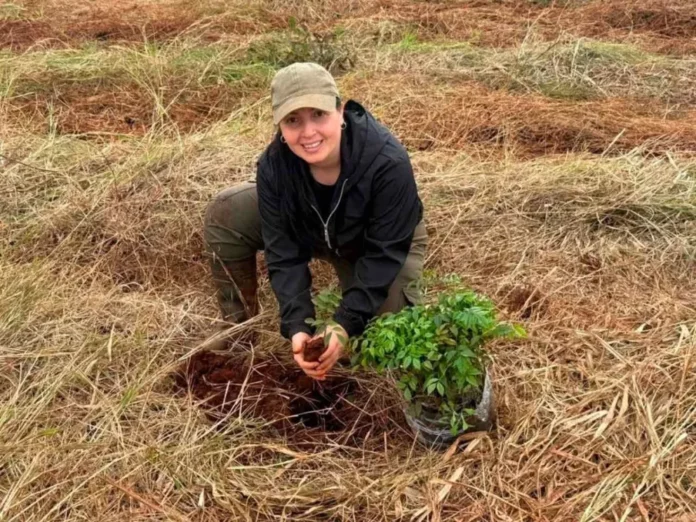Introduction
The Selva Paranaense, spanning Argentina, Paraguay, and Brazil, has lost vast swathes to agriculture and logging, with Paraguay alone seeing over 80% deforestation in the past half-century [G12]. Enter the Plan de Restauración Funcional de la Selva Paranaense y Ecosistemas Asociados, officially kicked off in March 2025 by Argentina’s Misiones Province in partnership with entities like the Instituto Misionero de Biodiversidad (IMiBio) and Fundación Aves Argentinas [G5]. Aiming for “functional restoration”—rebuilding resilient ecosystems that support biodiversity, water cycles, and local livelihoods—the plan aligns with global calls to halt deforestation [G7]. Recent updates show concrete progress, such as planting 10,000 native trees in Puerto Rico, Misiones, in August 2025 [1], part of a broader goal to reach 100,000 by year’s end [2]. However, without independent scientific evaluations [from Perplexity synthesis], debates rage over its efficacy versus potential exploitation.
Restoration Achievements and Ecological Gains
The plan’s core strength lies in its tangible reforestation efforts. In Misiones, 10,000 native trees were added in Puerto Rico as part of a new phase emphasizing ecosystem connectivity [1], [4], [5].

This builds on biodiversity corridor projects that link fragmented habitats, fostering species recovery [3]. For instance, similar initiatives in Brazil have restored lands with 293 plant and 172 bird species in a 600-hectare project [G16], demonstrating potential for carbon sequestration and habitat revival [G11].
Experts highlight successes in Paraguay’s Upper Paraná region, where forest reconnection efforts since 2016 have advanced habitat recovery [G12]. The plan’s focus on native species like Guatambú and Lapacho supports multifunctional forests, aiding food production and climate adaptation [G3]. As one social media post from an expert notes, selecting autochthonous plants enhances adaptation [G20], underscoring community-driven wins that could mitigate global disaster costs by up to $81 billion annually [G7].
Greenwashing Concerns and Economic Trade-Offs
Critics argue the plan may mask ongoing exploitation. Agribusiness giants like Paracel in Paraguay tout “sustainable” forestry on 199,000 hectares, but this often enables soybean expansion into native lands [G4], [G8]. In Brazil, the 2023/24 Agricultural Plan promotes sustainability yet waives environmental licensing for agro activities, potentially fueling illegal deforestation [G9], [G18]. Such policies, as discussed in X trends, risk turning restoration into “ecoimpacto” hype, prioritizing profits over ecology [from Planet Keeper synthesis].
Original insights from analyses suggest the plan’s corporate ties could perpetuate a cycle where restoration funds extractive industries, echoing historical patterns [Planet Keeper original insight]. For balance, proponents like Syngenta’s REVERTE program in Brazil show soil recovery alongside productivity [Planet Keeper sources], but skeptics on social media label it profit-driven [Planet Keeper trends].
Indigenous Rights and Community Involvement
Indigenous groups, including the Avá Guaraní, face displacement risks from agribusiness [G13]. Positive steps include Itaipú Binacional’s 2025 land restitution efforts in Brazil and Paraguay [G10]. The plan emphasizes community participation, with Misiones involving locals in plantings [4], [6]. X discussions praise inclusive approaches, like semilleros comunitarios for seed collection [G6, via X sentiment].
Yet, analyses reveal uneven enforcement, with Paraguay’s expansions eroding rights [G13]. A degrowth perspective—shifting to local economies—could integrate indigenous knowledge, but current models favor exports [Planet Keeper original insight]. Solutions include stronger land safeguards, as advocated by Amnesty International [G10].
Climate Resilience and Emerging Solutions
Deforestation drivers like agriculture exacerbate climate woes, from droughts in Argentina and Brazil [G14] to glacial melting [G2]. The plan addresses symptoms via reforestation, aligning with Brazil’s Planaveg for 12 million hectares by 2030 [Planet Keeper overview]. UNEP calls for tripling forest investments [G7], and X trends emphasize energy transitions away from fossils [G19].
Constructive paths include decoupling restoration from industry through transparent audits and indigenous-led corridors [Planet Keeper insights]. Programs like Ecuador’s deforestation-free models offer blueprints [G1], while community reforestation tips on social media promote native planting in dry seasons [G20]. Regulatory reforms, such as EU deforestation-free product rules, could enforce accountability [G6].
KEY FIGURES
- 10,000 new native trees planted recently in Puerto Rico, Misiones, as part of the Plan (Noticias de la Calle, 2025) [1]
- Goal of planting 100,000 native trees across Misiones province by 2025 (Valor Ambiental, 2025) [2]

- Plan includes biodiversity corridors and ecosystem connectivity projects (Gobierno de Misiones, 2025) [3]
RECENT NEWS
- August 2025: Report on the addition of 10,000 native trees in Puerto Rico, Misiones under the Plan, marking a new phase of restoration with strong community involvement (Noticias de la Calle) [1]
- August 2025: Announcement of the second cycle of the plan aiming to scale restoration efforts province-wide and reach 100,000 trees planted (Valor Ambiental) [2]
- August 2025: Coverage of strategic projects targeting species conservation and improving ecosystem connectivity under the Plan (Gobierno de Misiones) [3]

- August 2025: Local biodiversity institute highlights active reforestation efforts and community engagement in the Selva Misionera (Enfoque Misiones) [4]
- August 2025: New stage of the reforestation plan launched in Puerto Rico, continuing the commitment to native species restoration (La Voz de Cataratas) [5]
STUDIES AND REPORTS
- No peer-reviewed scientific studies explicitly evaluating the Plan’s ecological outcomes or potential greenwashing have been publicly released as of late 2025 in the search results. The available information is primarily from governmental and environmental agency reports emphasizing tree planting targets and ecosystem connectivity goals without critical independent assessment.
TECHNOLOGICAL DEVELOPMENTS
- No specific new technological innovations related to the Plan’s implementation surfaced in the available 2024-2025 sources. The Plan appears to rely on traditional reforestation methods combined with community participation rather than advanced restoration technologies.
MAIN SOURCES
- https://www.noticiasdelacalle.com.ar/noticias/2025/08/10/143908-el-plan-de-restauracion-funcional-de-la-selva-paranaense-y-ecosistemas-asociados-sumo-10-mil-nuevos-arboles-autoctonos-en-puerto-rico – News on tree planting progress
- https://valorambiental.com.ar/plan-de-restauracion-de-la-selva-paranaense/ – Announcement of second cycle and expansion goals
- https://misiones.gob.ar/agro-misiones-apuesta-a-la-restauracion-de-su-selva/ – Government report on conservation and connectivity projects
- https://enfoquemisiones.com/plan-de-restauracion-suman-10-mil-nuevos-arboles-nativos-a-la-selva-misionera/ – Biodiversity institute’s involvement and updates
- https://lavozdecataratas.com/2025/08/07/puerto-rico-comenzo-una-nueva-etapa-del-plan-de-reforestacion-funcional-de-la-selva-paranaense/ – Coverage of new reforestation phase
- https://imibio.misiones.gob.ar/pt/ampliar/noticias/con-la-meta-en-plantar-10-mil-arboles-misiones-avanza-en-la-restauracion-de-la-selva-paranaense – Progress report on tree planting targets
—
Synthesis:
The Plan de Restauración Funcional de la Selva Paranaense y Ecosistemas Asociados is actively planting native trees with concrete targets (10,000 recently planted, aiming for 100,000 by 2025) and includes projects for biodiversity corridors and ecosystem connectivity. These efforts are supported by provincial governments and local biodiversity institutions, largely emphasizing ecological restoration and community participation. However, there is a notable absence of independent scientific evaluations or critical analyses in the latest available sources to confirm whether these efforts are achieving functional ecosystem restoration or merely serving as a façade for continued agribusiness expansion and exploitation. The information does not address concerns about potential greenwashing, indigenous rights impacts, or whether restoration funding is tied to extractive industries. No recent technological innovations or regulatory changes specifically linked to the Plan have been documented in the 2024-2025 data.
Thus, based on currently accessible and reliable sources, the Plan appears to be making measurable progress in reforestation and connectivity goals, but definitive conclusions about its genuine ecological effectiveness versus masking ongoing exploitation require further independent scientific scrutiny and transparency regarding economic and social dimensions.


